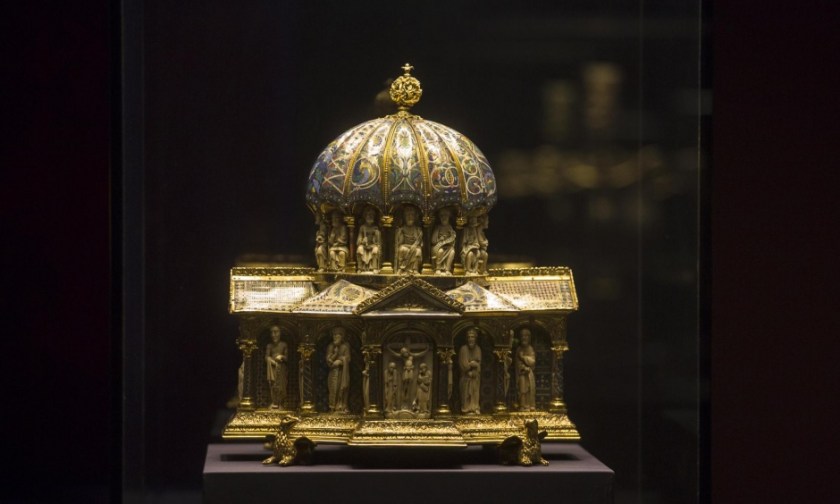
“Any transaction in 1935, where the sellers on the one side were Jews and the buyer on the other side was the Nazi state itself is by definition a void transaction”.
So argues Nicholas O’Donnell, an attorney representing descendants of the Jewish art dealers who sold a collection of medieval artworks known as the “Guelph” or “Welfenschatz” Treasure, allegedly under duress and threat of persecution. The complaint for the two heirs was filed in U.S. District Court in Washington D.C. to recover yesterday afternoon. The objects were part of the treasury of the Braunschweig cathedral and were used to store and display relics. The claimants allege that a group of Jewish art dealers were forced to sell the objects in 1935 to the German state of Prussia.
One unfortuante aspect here is that the German commission charged with resolving the claims of Nazi-era claimants was unable to achieve a satisfactory result for the claimants and the German government. One of the likely issues in this dispute will be one the timelinesss of this suit, whether a court will examine the circumstances surrounding an alleged forced sale nearly 80 years after it took place. The complaint alleges that the objects were sold under persecution for 4.15 million Reichsmarks (RM). If we do some rough back-of-the-envelope calculations, the exchange rate was 2.45 RM for $1. So that means the objects were sold for just shy of $1.7 million in 1935 dollars, which be nearly $28 million today. Considering the treasure may be worth as much as $226m, the German State seems to have received a pretty good bargain. The legal question will be whether that sale was under duress.
O’Donnell argues in his blog this morning:
The Welfenschatz was sold to the Consortium by its previous owners in 1929. After selling about half the collection of their own free will before 1933, the situation for the Consortium changed quickly and drastically after the Nazi seizure of power. The Consortium was suddenly targeted by a concerted campaign of the National Socialists to acquire property they believed was of German heritage and not fit to be owned by Jews, though of course those Jews were until then German citizens too. There were many, many recorded instances in which the Jews of Germany were stripped of their property. And in this case, it was an organized effort that ran from the mayor of Frankfurt (where they lived) all the way up to Goering and Hitler personally. Eventually, the Consortium relented under intense pressure and sold the collection under duress for a fraction of its actual value. The proceeds were paid into accounts that were in actuality blocked, and the Consortium’s members were subjected to further intimidation and the infamous flight taxes, which are described in a Gestapo document included in yesterday’s court filing. After the acquisition, Goering made a great public gesture of presenting the Welfenschatz to Hitler as a personal gift, and was even featured in news reports at the time. It has remained in Berlin ever since, now held by the SPK.
Quite simply, the Welfenschatz belongs to my clients. The transaction forced upon the Consortium was illegitimate as a matter of German and international law, and it had and has no validity whatsoever. My clients attempted in good faith to obtain the return of the collection by participating in mediation with the Advisory Commission, but despite presenting conclusive and unopposed evidence of the oppression that they faced and the inadequate sum they received, the Advisory Commission refused last year to recommend restitution, and the SPK likewise refused to return it.
In response Hermann Parzinger, the President of the Prussian Cultural Heritage Foundation said in a statement: “While we believe that there is no jurisdiction over this claim in the United States, we are confident that any court ruling on the merits would reach the same conclusion that we and the advisory commission have reached.” Germany’s Culture minister Monika Grütters said in a statement that the claimants case was “difficult to understand”.
I hope to look into this dispute in more depth, but my initial take is that while proving the timeliness of the suit, this claim presents yet another uncomfortable Nazi-era art dispute for the German government, one they seem unable to avoid.
The complaint filed in court yesterday is embedded below, and let me offer a reminder to those wishing to comment on this suit. A complaint is inherently one-sided—well-written allegations, which the claimants hope will be successful. These documents by their nature are framed to persuade a court to rule for one side. Of course this suit may or may not result in a favorable outcome for the claimants, but the complaint is only the first step in what will likely be a lengthier dispute.
Philipp et al. v. Federal Republic of Germany

Hi Derek, it seems a very interesting case. At first sight I wonder whether the International law rule on State immunity applies and which is the law governing the statute of limitation (if any)